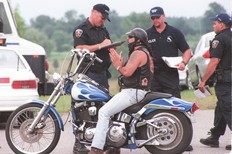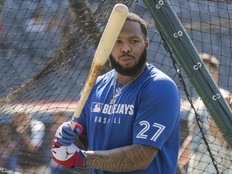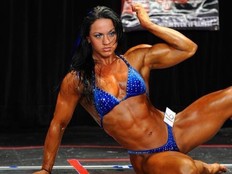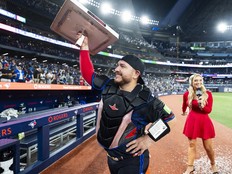From yearling sale to finish line, everything you need to know about the Kentucky Derby
The Kentucky Derby is the 'holy grail' of horse racing and it takes years and plenty of money for a thoroughbred to make it.

Article content
The Kentucky Derby might be, as its trademarked slogan suggests, the most exciting two minutes in sports® — and it is unquestionably the most wagered-on, most-watched and most-attended horse race in North America.
In 2024, bettors put down $211 million on the iconic horse race held on the hallowed grounds of Churchill Downs in Louisville, Ky.
While the Super Bowl now draws more than $1 billion in legal bets — by far the largest handle for a single sporting event — the National Football League championship tilt plays out over three hours or so.
The Derby, contested by three-year-old thoroughbreds, is generally won in two minutes and change, lending credence to the slogan which was trademarked by Churchill Downs Incorporated in 2018.
The Derby is also known and was trademarked in 2009 as the Run for the Roses® because the victorious horse and jockey proceed to the winner’s circle where the animal is festooned with a blanket of 554 red flowers, while the rider receives a 60-rose bouquet.
The post-race tradition began much more humbly in the late 1800s with far less flora, but just as much fawning. The first Derby went off in 1875 when Aristides beat 14 other horses to the finish line in 2:37.75 after a gruelling mile and a half.
In 1896, the race was shortened to a mile and a quarter and in 1964 Northern Dancer became the first Canadian-bred horse to win it, doing so in exactly two minutes.
In 1973, the great Secretariat lowered the race record to 1:59.40, where it remains.
The field for the 151st running, which hits the track on May 3, will be comprised of 20 horses, including 3-1 favourite Journalism and 20-1 long shot Publisher.
What makes the Kentucky Derby stand apart from other races?
For starters, it is the first jewel in the so-called Triple Crown of racing and, as such, only the winner of the Derby has a chance to complete the hat trick if the horse goes on to win the Preakness Stakes and Belmont Stakes.
“The Canadian Derby is a big deal, but the Kentucky Derby is the holy grail,” said Tim Rycroft, one of Alberta’s top thoroughbred trainers, with more than 800 wins. “It’s just a famous race that everyone gears up for basically all winter down there in the states. It’s not the most expensive race out there or anything, it’s kind of the start of the race season and it seems to just have that appeal to it.
“All trainers want to win the Kentucky Derby, all the riders want to win the Kentucky Derby. That’s all they talk about.
“We talk about that as horsemen amongst ourselves, too. There’s some really good horsemen in Alberta, there’s some really good horsemen in Ontario and there’s some really good horsemen all around the world that’ll never have the opportunity to run a horse in the Derby.”
How does a horse qualify for a post position in the Derby?
The short answer is by virtue of a points system. About 35 designated stakes races — collectively referred to as The Road to the Kentucky Derby — offer points to the top-five finishers.
Initial prep races held from September through January feature descending point totals of 10, five, three, two and one. Those numbers double for select races, then move to 50, 25, 15, 10 and five for the first stage of the championship series and top out at 100, 50, 25, 15 and 10 for the second stage. Generally, a total of 40 points will be enough to guarantee one of the 20 starting positions at Churchill Downs.
The much longer answer traces a horse’s arc back to its bloodlines and emergence at a weanling or yearling auction or sale. A weanling is a horse that has been weaned off its mother’s milk at about six months of age.
Nyquist, winner of the 2016 Derby, was sold for $180,000 as a weanling, for $230,000 as a yearling and for $400,000 as a two-year-old. The horse went on to post career earnings of $5.2 million and commanded a stud fee of $40,000 per foal.
Nyquist was sired by Uncle Mo, the undefeated American champion two-year-old of 2010. Illness caused Uncle Mo to miss the 2011 Kentucky Derby as a three-year-old. That race was won by Animal Kingdom, a horse with Northern Dancer in its bloodline.
Multiple descendants of Secretariat, who sired 663 foals, can be found in most Derby races. For instance, there were eight in each of the 2023 and 2024 Derby fields.
How does a purchaser know which horse at a given sale will most likely go on to win a major race like the Derby?
“There’s so much luck involved,” Rycroft said. “I remember a pretty good quote from (legendary trainer) Bob Baffert when Seize The Grey (won the Preakness) last year. He walked up with his bloodstock agent to congratulate (fellow trainer) D. Wayne Lukas on Seize The Grey and Baffert looked over at his bloodstock agent and said ‘how did we miss this one? All the money we spent and we didn’t buy this one?’”
Two Baffert-trained horses had entered the Preakness, Muth and Imagination. Muth was sidelined by a pre-race fever, while Imagination finished seventh. Muth was purchased for $2 million as a two-year-old, Imagination for $1.05 million as a yearling.
Seize The Grey, on the other hand, was bought for just $300,000 as a yearling.
“So it’s a lot of luck,” Rycroft continued. “You’ve got to do your homework to the best of your ability and have the right people around you who know what they’re looking at, but at the end of the day, the million-dollar horses don’t always work out.”
How does a horse make it from the sale to the Derby?
“They usually go from the yearling sale to the farm where they’re probably going to be broke and ridden,” Rycroft said. “That usually takes anywhere from a month to two months and then they give them babies a little break, say a month or so off and then they start them on their journey as two-year-olds to becoming racehorses.
“So the exercise riders and the farm managers and lots of people handle these babies before they actually go to the guy that’s training them at the racetrack. All this takes money and time and every step them babies take you know could be their last.
“So there’s a lot of pressure on a lot of people to get these horses to the races, not the Kentucky Derby, just to the races.”
When would most horses show the kind of characteristics that are typical of a Derby horse?
“There’s horses you’ll always like or don’t like and you’ll pick up on it pretty quick,” Rycroft continued. “When one of my young horses is on the track and you’re watching, it’s just little things you notice, like if they pick up a lead quick and handle themselves real well; if they just look athletic, they just look different than a horse that can’t run a bunch.
“If you’ve watched enough of them you learn to know what you like and what you’ve had success with.
“You know when you watch (Edmonton Oilers captain Connor) McDavid skate with other guys, he doesn’t have to have his number or name on his sweater to realize that he stands out.”
In addition to the purchase price, what does it cost to get that horse Derby-ready as a three-year-old?
“I wouldn’t even know what the day rate is in the states and different guys have different deals, but it’s probably $3,000 to $3,500 a month from the day that they buy him until he becomes a racehorse,” Rycroft said. “In Canada, it’s about $2,500 a month to get a horse trained.”
When does a Derby horse start racing?
“The rule of thumb is it’s nice to get them started as two-year-olds,” Rycroft said. “It just gets them in a different frame of mind and I think it makes them race-ready a little quicker as a three-year-old. They’ve been through all the stuff.
“Justify, he went on a win streak as a three-year-old, he never did run as a two-year-old, and he wins the Triple Crown.”
Justify, a chestnut stallion and sixth-generation descendant of Secretariat, is the 13th and most recent winner of the Triple Crown, having turned the trick in 2018. He was bred by Canadian John Gunther and his daughter Tanya at Glennwood Farm in Versailles, Ky.
“Ideally, and I think a lot of guys will agree with me, it’s nice to get a race or two as a two-year-old just so that you don’t have to go through all the two-year-old stuff as a big three-year-old,” Rycroft said.
“Getting accustomed to the starting gate and the crowds, the post parade and getting in a race and being competitive with other horses, you know, not being scared of other horses. Race ready is what I call it.”













Postmedia is committed to maintaining a lively but civil forum for discussion. Please keep comments relevant and respectful. Comments may take up to an hour to appear on the site. You will receive an email if there is a reply to your comment, an update to a thread you follow or if a user you follow comments. Visit our Community Guidelines for more information.